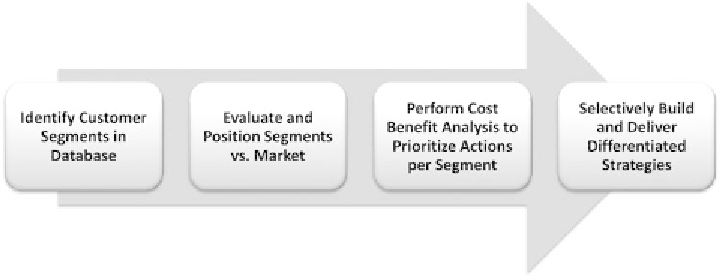Database Reference
In-Depth Information
• Always prefer supervised to unsupervised models when your business problem
concerns the classification of customers into categories known in advance.
Predicting events (e.g., purchase of a product, churn, defaulting) is a task that
can be addressed much more efficiently by classification models. A decision
tree that estimates the event's propensities will produce better results than any
unsupervised model.
• Customers that do not fit well to their segment should be set apart and assigned
to an ''unclassified'' segment in order to improve the homogeneity and quality
of the segments. For instance, a customer with a very low amount in stocks and
a stocks-only product portfolio, even if classified as an ''Investor'' by a clustering
algorithm, should be identified and assigned either to the ''Unclassified'' or to
the ''Passive/Inactive'' group.
SEGMENTATION MANAGEMENT STRATEGY
The following roadmap (Figure 5.7) outlines the main steps that a segmentation-
oriented enterprise should follow to develop an effective marketing strategy based
on behavioral segments:
Step 1: Identify the customer segments in the database
Initially the segmentation results should be deployed in the customer database.
Customers should be scored and assigned into segments.
In this phase the involved team should:
Figure 5.7
Roadmap of the segmentation management strategy.




Search WWH ::

Custom Search